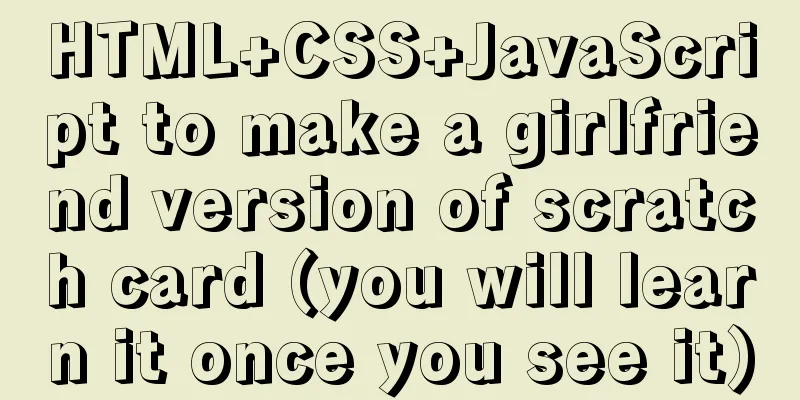Do you know what are the ways to jump routes in Vue?

The first method: router-link (declarative routing)
1. Without parameters <router-link :to="{name:'home'}">
<router-link :to="{path:'/home'}"> //either name or path is fine, name is recommended
// Note: If the link in router-link starts with '/', it starts from the root route. If it does not start with '/', it starts from the current route.
2. With parameters <router-link :to="{name:'home', params: {id:1}}">
// params pass parameters (similar to post)
// Routing configuration path: "/home/:id" or path: "/home:id"
// If you don't configure path, you can request it for the first time, but the id will disappear when you refresh the page // If you configure path, the id will be retained when you refresh the page // HTML takes the parameter $route.params.id
// script takes the parameter this.$route.params.id
<router-link :to="{name:'home', query: {id:1}}">
The second method: router.push (programmatic routing)
// string router.push('home')
// Object router.push({ path: 'home' })
// Named routes router.push({ name: 'user', params: { userId: '123' }})
// With query parameters, becomes /register?plan=private
router.push({ path: 'register', query: { plan: 'private' }})
Note: If path is provided, params will be ignored, which is not the case for query in the above example. Instead, you need to provide a route name or write the full path with parameters as shown in the following example:
const userId = '123'
router.push({ name: 'user', params: { userId }}) // -> /user/123
router.push({ path: `/user/${userId}` }) // -> /user/123
// The params here are not effective router.push({ path: '/user', params: { userId }}) // -> /user
The third way: this.$router.push() (call in the function)
1. without parameters this.$router.push('/home')
this.$router.push({name:'home'})
this.$router.push({path:'/home'})
2. query parameter this.$router.push({name:'home',query: {id:'1'}})
this.$router.push({path:'/home',query: {id:'1'}})
// html takes the parameter $route.query.id
// script takes the parameter this.$route.query.id
3. params parameter this.$router.push({name:'home',params: {id:'1'}}) // Only name can be used
// Routing configuration path: "/home/:id" or path: "/home:id" ,
// If you don't configure path, you can request it for the first time, but the id will disappear when you refresh the page // If you configure path, the id will be retained when you refresh the page // HTML takes the parameter $route.params.id
// script takes the parameter this.$route.params.id
4. The difference between query and params. Query is similar to get. After the page is redirected, the parameters will be added to the URL, similar to ?id=1. Non-important parameters can be passed in this way. Passwords and the like can still be passed in params. The refresh page id is still in params. Similar to post, after the page is redirected, the parameters will not be added to the URL, but the refresh page id will disappear. **Note: To get the parameters on the route, use $route, without r at the end**
The fourth method: this.$router.replace() (same usage as above, push)The fifth way: this.$router.go(n)this.$router.go(n) Jump forward or backward n pages, n can be a positive or negative integer ps: difference from this.$router.push Jump to the specified URL path and add a record to the history stack. Clicking back will return to the previous page this.$router.replace Jump to the specified URL path, but there will be no record in the history stack. Clicking back will jump to the previous page (that is, directly replace the current page) this.$router.go(n) Jump forward or backward n pages, n can be a positive or negative integer Params is part of the route and is required. Query is the parameter concatenated after the url. It doesn't matter if there is no query. You can pass parameters even if params and query are not set. However, if params is not set, the parameters will be lost when the page is refreshed or returned. Both can pass parameters, what is the difference? The query parameter is configured with path, while the params parameter is configured with name. Configuring path in params is invalid. query does not need to set parameters in the routing configuration, but params must be set The parameters passed by the query will be displayed in the address bar The refresh of params will be invalid, but query will save the passed value and remain unchanged after refresh refer to: https://www.jb51.net/article/183611.htm vue.js official website SummarizeThis article ends here. I hope it can be helpful to you. I also hope you can pay more attention to more content on 123WORDPRESS.COM! You may also be interested in:
|
<<: Cross-browser local storage Ⅰ
>>: Detailed explanation of the difference between in and exists in MySQL
Recommend
Summary of several common ways to abbreviate javascript code
Table of contents Preface Arrow Functions Master ...
MySQL 8.0.16 installation and configuration tutorial under Windows 10
This article shares with you the graphic tutorial...
Zen HTML Elements Friends who use zen coding can collect it
html ¶ <html></html> html:xml ¶ <h...
A brief analysis of Docker private image library and Alibaba Cloud object storage OSS
Docker private image library Docker private image...
Common front-end JavaScript method encapsulation
Table of contents 1. Enter a value and return its...
Use viewport in meta tag to define screen css
<meta name="viewport" content="w...
How to deploy zabbix_agent in docker
zabbix_agent deployment: Recommendation: zabbix_a...
Solve the pitfall of storing boolean type values in localstorage
LocalStorage stores Boolean values Today, when I ...
How to use MySQL 5.7 temporary tablespace to avoid pitfalls
Introduction MySQL 5.7 aims to be the most secure...
Mysql optimization tool (recommended)
Preface While browsing GitHub today, I found this...
Summary of the unknown usage of "!" in Linux
Preface In fact, the humble "!" has man...
Detailed example code of mysql batch insert loop
background A few days ago, when I was doing pagin...
Vue sample code for implementing two-column horizontal timeline
Table of contents 1. Implement the component time...
View the command to modify the MySQL table structure
Brief description The editor often encounters som...
Introduction and examples of hidden fields in HTML
Basic syntax: <input type="hidden" na...









